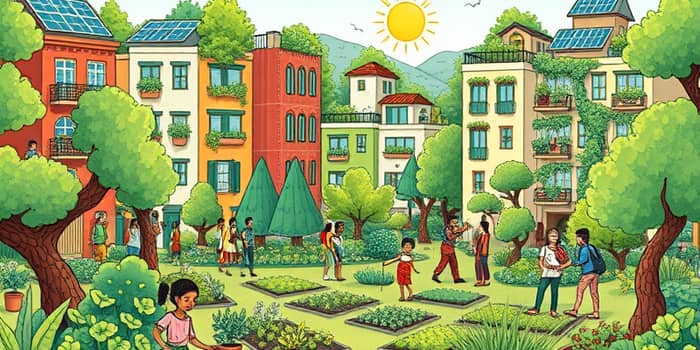
Design has the power to shape not only our surroundings but also our collective future. By embracing eco-aesthetics and equity, we can create lasting social and ecological value that transcends simple financial returns.
At its core, eco-aesthetic design is about integrating ecological principles and aesthetic considerations to craft spaces, products, and systems that honor both nature and human creativity. Equity in design ensures fair access, fair labor practices, and inclusive outcomes for every stakeholder.
When these two concepts converge, they expand our notion of wealth beyond monetary metrics to include cultural, social, and environmental capital. This new paradigm values community resilience, improved public health, and restored ecosystems as essential forms of prosperity.
Material choices form the foundation of eco-aesthetic projects. Using renewable, recycled, or low-impact materials such as reclaimed wood, bamboo, and recycled plastics not only reduces environmental harm but also adds unique textures and stories to designs.
Material transparency is equally vital. Clear labeling of environmental footprints and ethical supply chains empowers consumers and designers to make informed decisions that support social justice and ecological health.
Efficient use of energy is both responsible and beautiful. Passive solar orientation, natural ventilation, and well-insulated envelopes reduce energy demand while delivering comfortable, light-filled spaces.
Green-certified buildings can command rental premiums up to 7% and sell for up to 13% more than conventional properties. These figures highlight the financial returns of sustainable design alongside its lower carbon footprint.
Moving from a linear model of take-make-waste to a circular system keeps materials in use for longer and fosters creative reuse. By designing products for disassembly, repair, and recycling, we can shrink material waste by up to 70%.
Behavioral design elements—like colorful, intuitive recycling stations—encourage sustainable habits and turn waste management into an engaging part of everyday life.
Biophilic principles reconnect people with nature through daylight, greenery, natural materials, and scenic views. Studies show that such environments can boost productivity by 15% and accelerate patient recovery rates by 12%.
These benefits illustrate how design can nurture both body and mind, creating spaces that heal communities and support emotional resilience.
A systems-thinking approach considers every stage of a product or building’s lifecycle. It recognizes interdependencies between social, economic, and environmental dimensions, leading to solutions that are robust and adaptable.
By mapping these connections, designers can identify leverage points that yield outsized benefits—such as community gardens that improve air quality, foster social cohesion, and provide educational opportunities.
Equitable design actively involves marginalized communities in decision-making, ensuring that benefits are shared and accessible. From public transportation hubs with universal design to affordable green housing, equity-focused projects dismantle barriers and create shared value.
Fair labor practices, community engagement workshops, and sliding-scale pricing models are practical strategies to embed justice into every stage of a project.
To capture the full impact of eco-aesthetic initiatives, we must measure beyond dollars. Metrics such as improved air quality, reduced stress levels, and increased civic participation offer a richer picture of success.
A furniture studio used FSC-certified lumber and non-toxic finishes to craft a chair designed for disassembly and eventual recycling. This product achieved a 40% reduction in embodied energy compared to conventional chairs.
In urban planning, stormwater parks combine flood mitigation with public art and green spaces. These multi-functional places draw visitors, enhance biodiversity, and foster stewardship of local watersheds.
Environmental aesthetics frames beauty as a catalyst for ecological awareness. By challenging consumerist values and promoting sufficiency, eco-aesthetics invites us to redefine our relationship with nature.
Critical inquiry reveals the influence of power structures—from marketing tactics to regulatory policies—and highlights the need for transparency and accountability in design.
Eco-aesthetic design draws on multiple fields: environmental science quantifies impacts, psychology decodes human responses, sociology explores cultural shifts, and design theory guides ethical practice.
Collaboration between these domains fosters innovation, ensuring that solutions are both technically sound and deeply human-centered.
Superficial greenwashing can masquerade as sustainability, but true eco-aesthetics demands rigorous, systemic transformation. Designers must resist quick-fix trends and champion long-term resilience.
Ensuring marginalized communities benefit requires intentional outreach, funding models that prioritize equity, and ongoing evaluation to adjust practice based on real-world feedback.
Eco-aesthetics and equity offer a roadmap to a richer, more resilient future. By weaving together environmental responsibility, social justice, and visual appeal, conscious design builds wealth that endures.
Every project, from a single piece of furniture to entire neighborhoods, holds the potential to regenerate ecosystems, uplift communities, and inspire lasting change.
References





